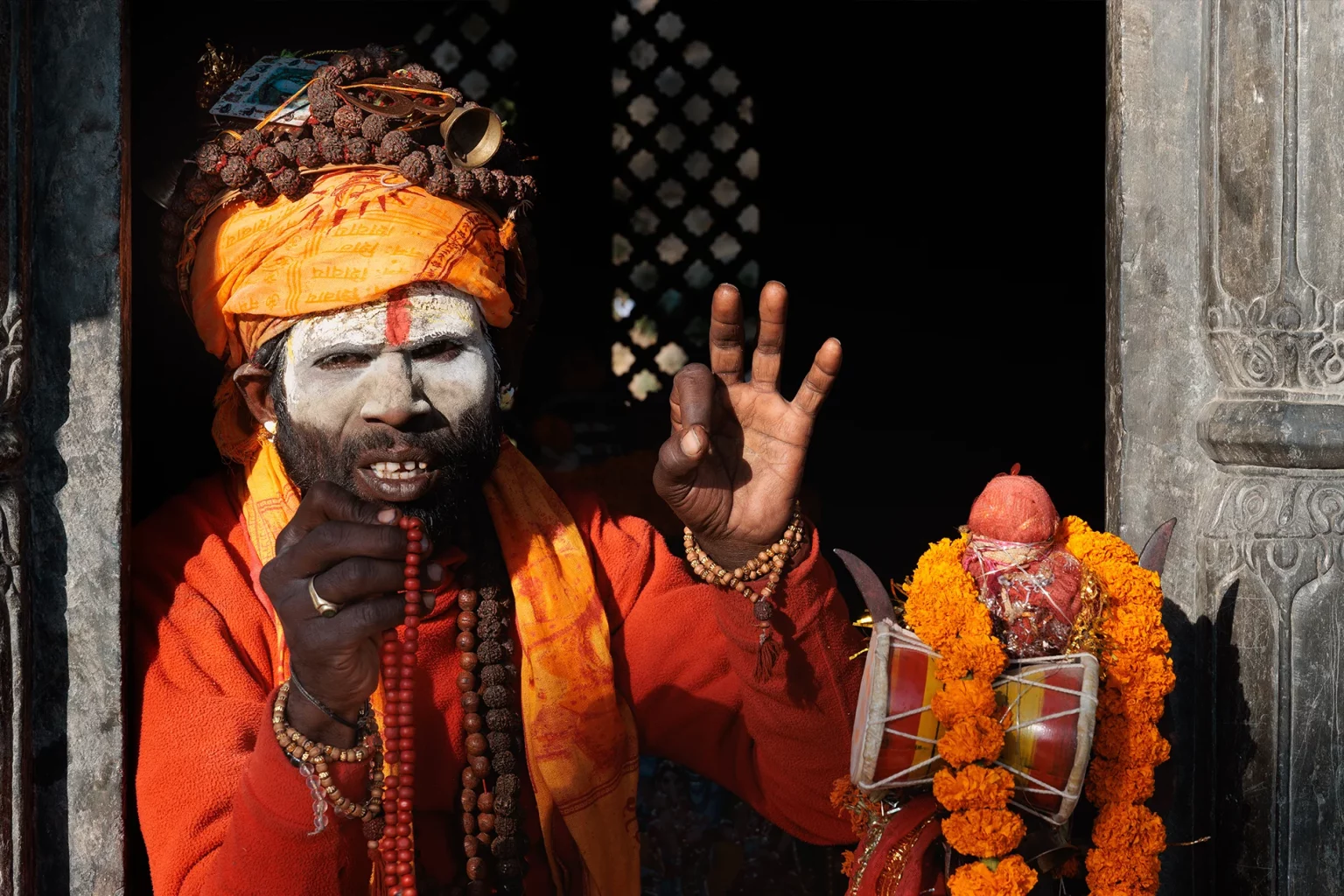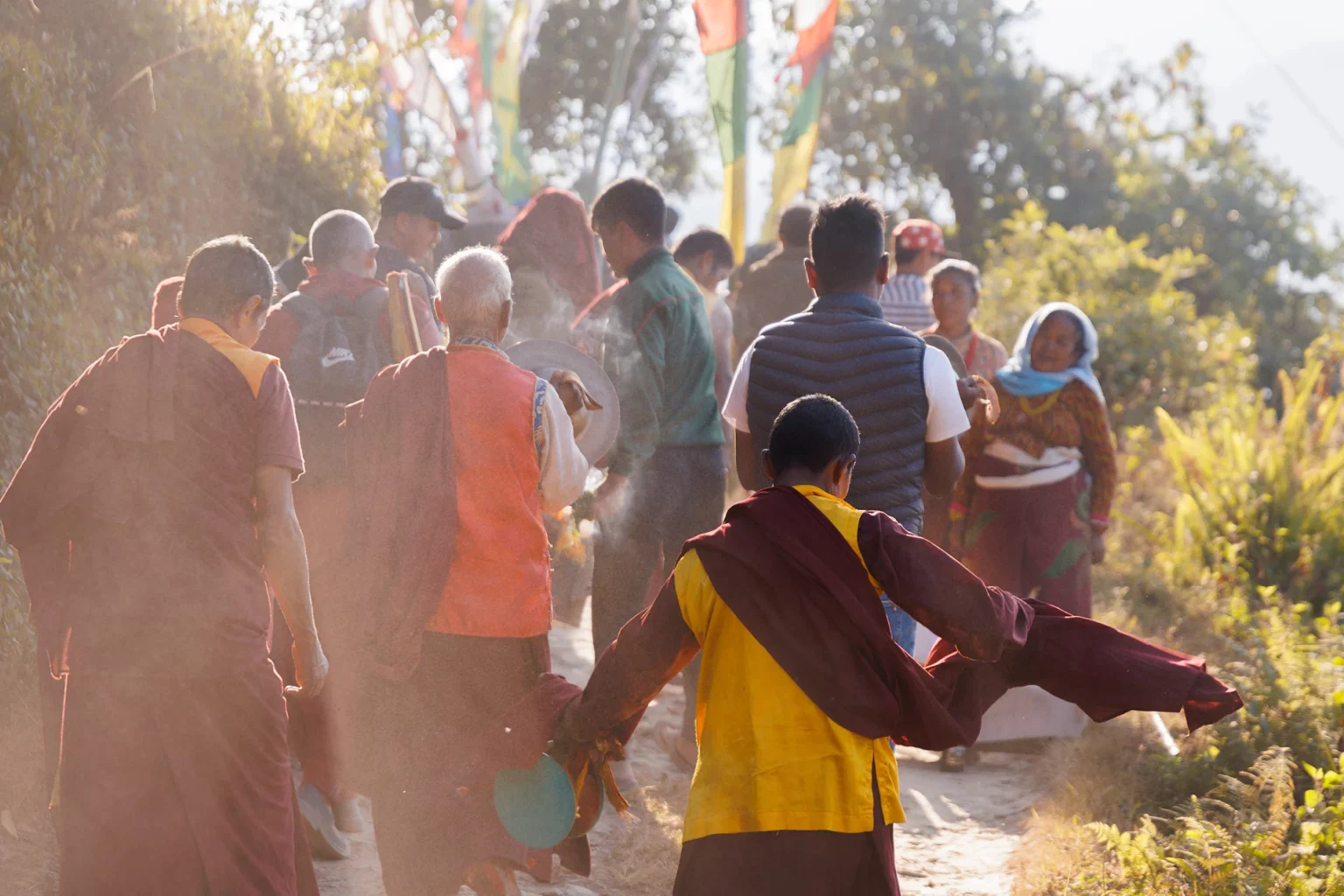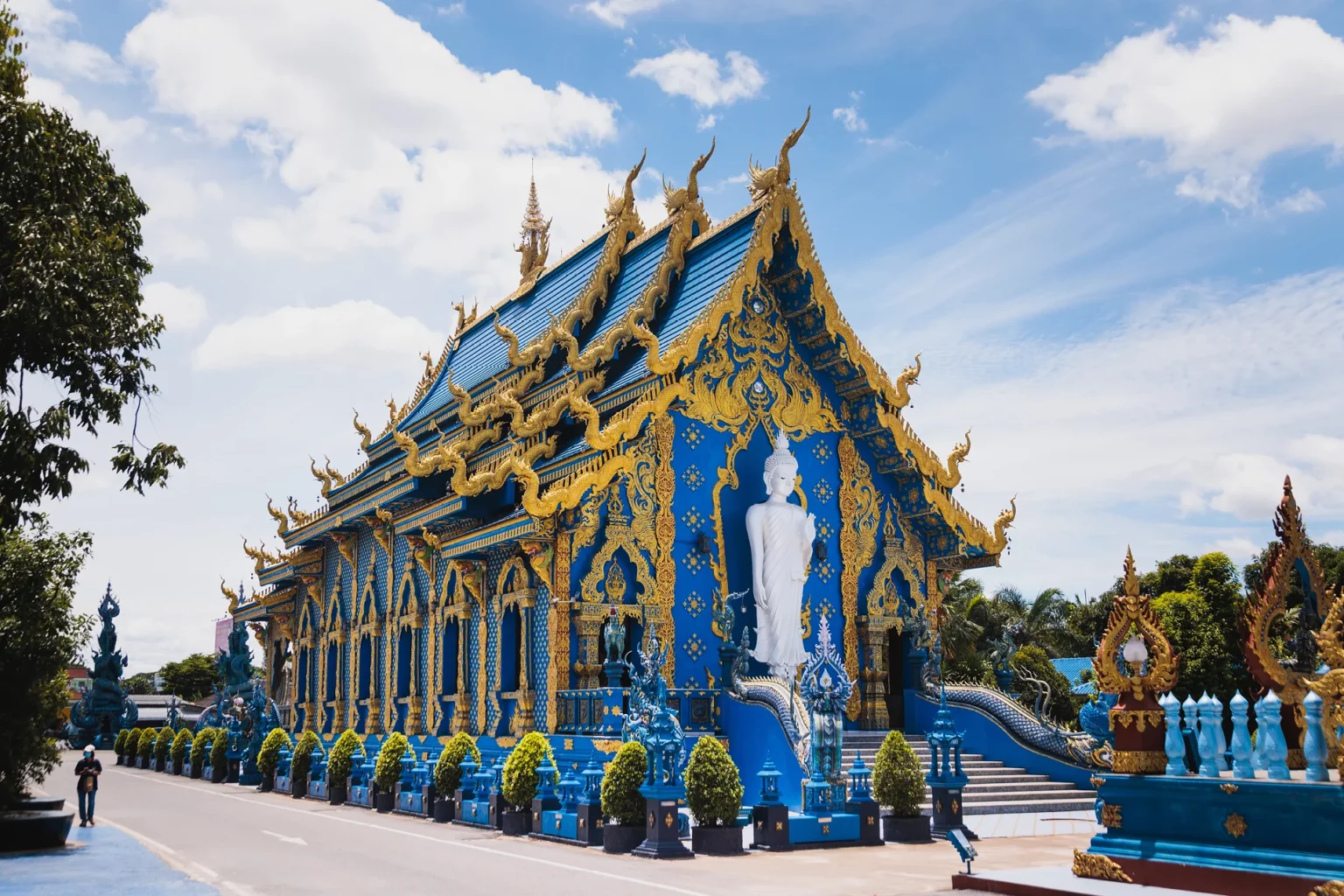This is the story of Ma Pang, a 36 years old Kayan woman who lives in the village of Huay Pu Keng; it’s a story of difficult choices, often picked on her behalf. The limit between necessity and tradition intertwine to create a complicated pattern. But above all, it is a story of sitting next to someone, learning to feel comfortable in an uncomfortable place.
I noticed Ma Pang on my first day in the village of Huay Pu Keng, she was sitting straight back and straight legs, her rudimentary loom on her hip. I observed her as she skilfully pushed down strings of cotton with a piece of wood, as million of women did before her, since the dawn of time.
Can flowers grow everywhere?
Barely minding me, she seems happy, absorbed by her minutious job.
There is something about her that sets her apart from the other people in the village; a beautiful, brittle aura surrounds her like a veil, tinged by a certain loneliness. She radiates strength, the kind that is forged through many difficult obstacles, and she learned to make the best out of her situation by adopting a positive attitude toward life. I learned later that, in Burmese, her name means flower and I think that it is really fitting!
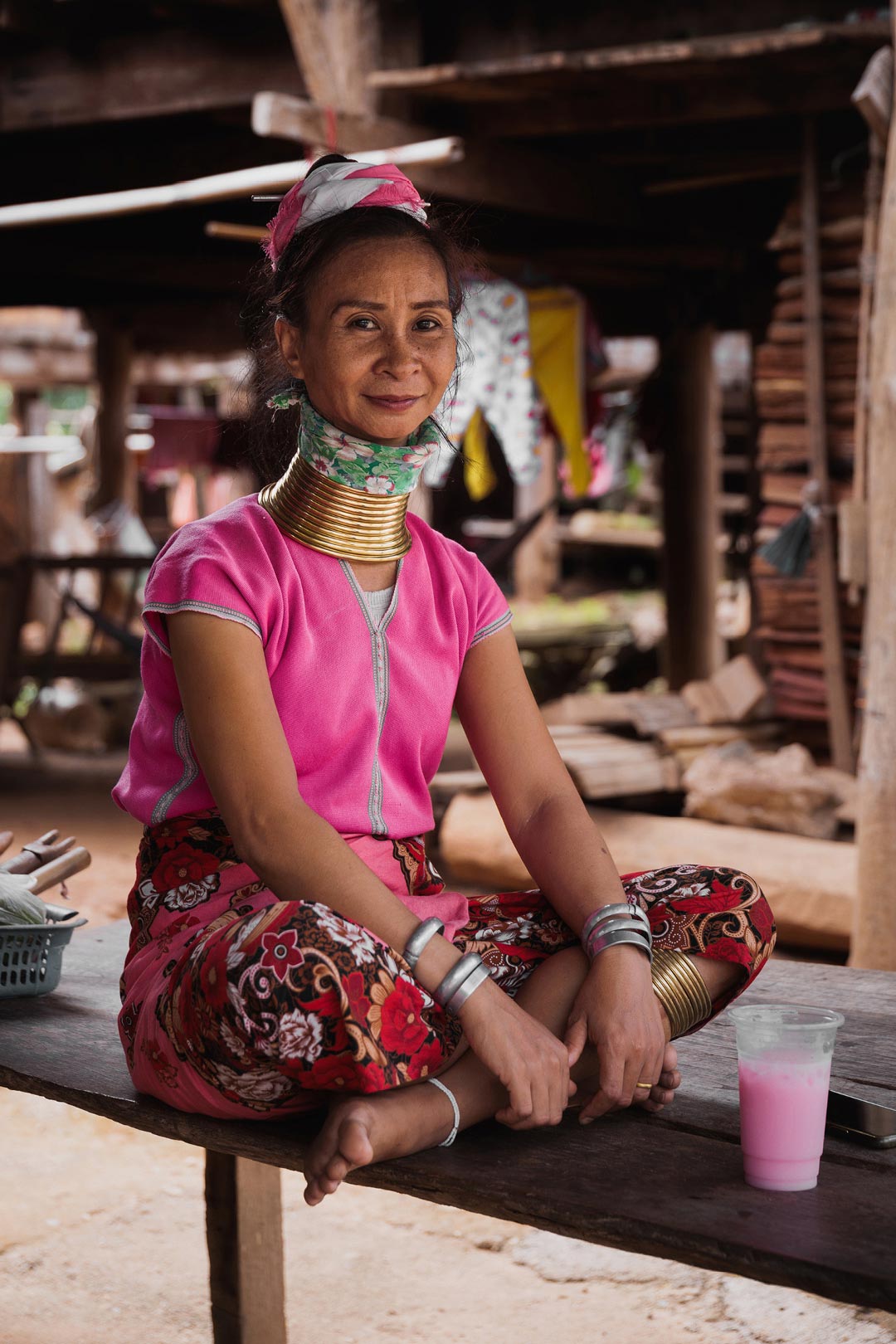
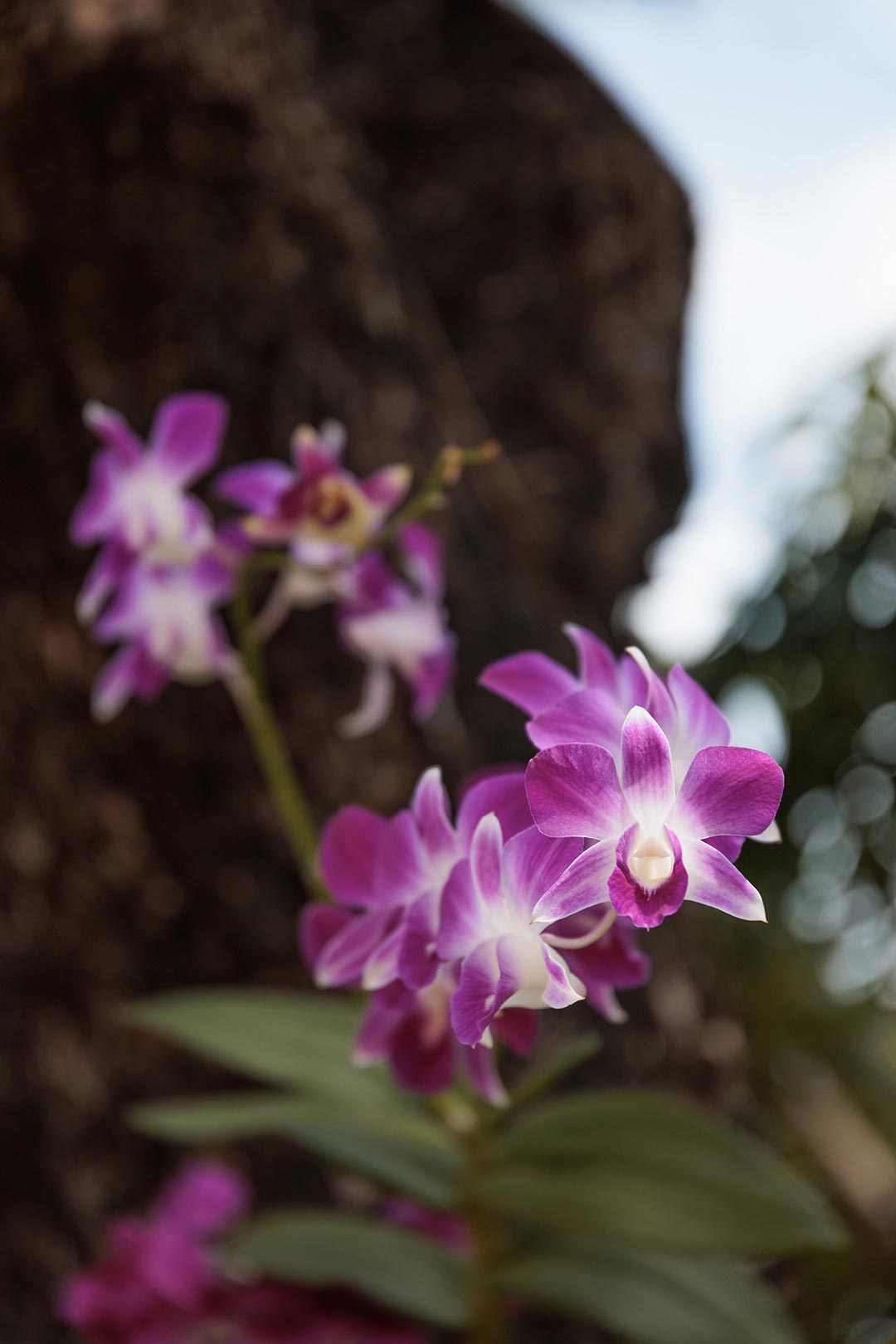
On my second day in the village, Ma Pang was sitting cross-legged on a bench in front of her house. She was sipping a pinkish drink, almost matching her blouse. Today she didn’t put “thanaka”, the traditional Burmese sun protection, on her face, because she’s not going into the field. Though she confessed to me later that she sometimes puts some just because tourists are curious about it. But not today! Today is the new moon, and in Kan Khwan, the religion of the Kayan, that means it’s also a day off!
I asked her if I could stay a bit with her, she smiled and gestured gently toward a wood trunk on her right. I sat there for a while, surrounded by a mindful but awkward silence, wondering what kind of questions to start with! Clumsily l asked, “Do you like it here?” (not that she ever really had a choice to go anywhere else, but still). With a soft voice, almost too quiet to hear, she replied “Yes … I’ve been living here of 30 years …”
A choice that is not a choice
I once read that everything that existed before you were 8 years old has, for you, always existed. What if all you knew was a village granted to your people in exchange for the commercialisation of your culture? What if most of what you have been thought was for you to fulfil a promise you never made?
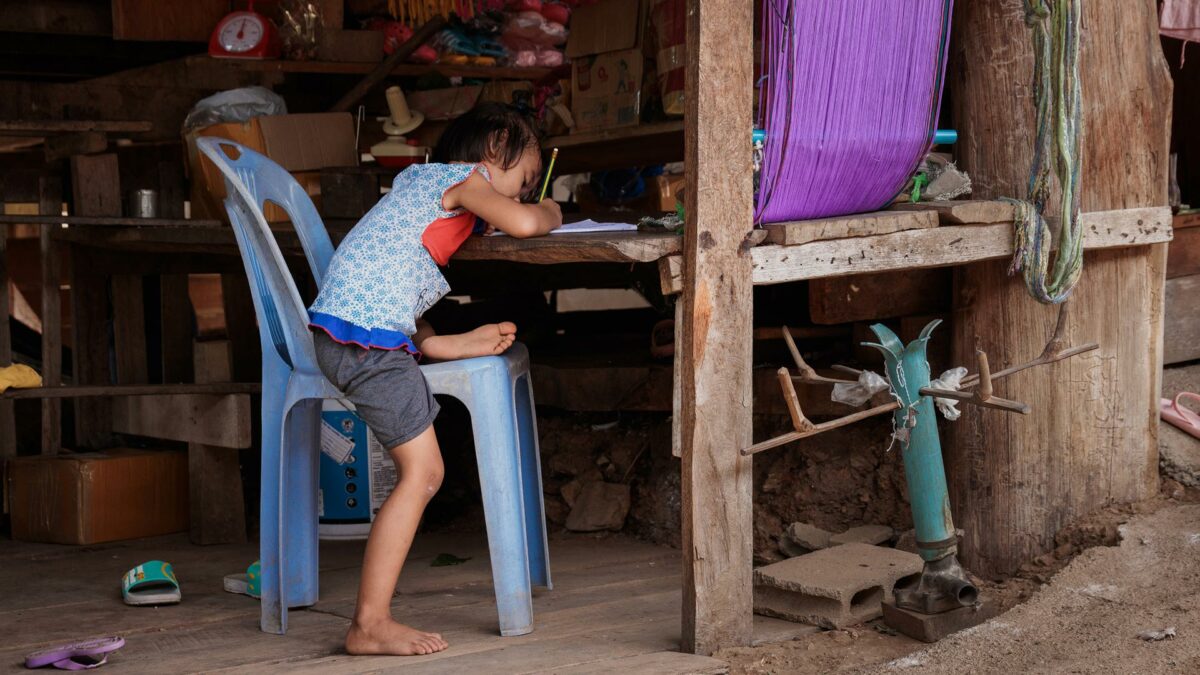
Ma Pang was 6 years old when her mother decided to seek refuge in Thailand. Together they crossed the jungle and the mountains that form the border between the Kayah state of Burma and the province of Mae Hong Son, in the north of Thailand.
Like most Karenni who crossed the border, they were offered the option to stay in a refugee camp or to be sent back to Burma. But since they belonged to the Kayan Lahwi tribe (also known as Longneck Karen), the Thai government offered them an extra option: move to a village that has been created for tourists to “discover the Karenni culture”. After 4 years in a refugee camp, Ma Pang and her mother moved to the adjoining village of Huay Pu Keng, on the riverbank of the Pai River. Out of the three options, this seemed to be the safest for them! By agreeing to move to that village, she secured a more peaceful life for her daughter; and what more can a parent want for their children?
With the help of NGOs, she learned some English, and with the wives of the tribes she learned the traditional crafts of the tribe. Some of those skills being important for the future financial stability of her family.
Truth is a foreign language
Since its creation, in the late 80s, the village economy has mainly been relying on tourism for its basic income, but the recent Covid pandemic forced the Kayan people to find alternative sources of revenue. Men found work in the nearby farms, and women went to work more often in the fields.
“Life has been difficult!…” she shares with me. “The village is a bit too quiet when tourists don’t come” and despite the travel ban being lifted by the Thai government, the village has not yet seen a new surge of travellers.
When she doesn’t go to the field where she cultivates sesame seeds, or in the forest to harvest bamboo for food, she sets up her table and use it to display the colourful knick-knacks that she sells.
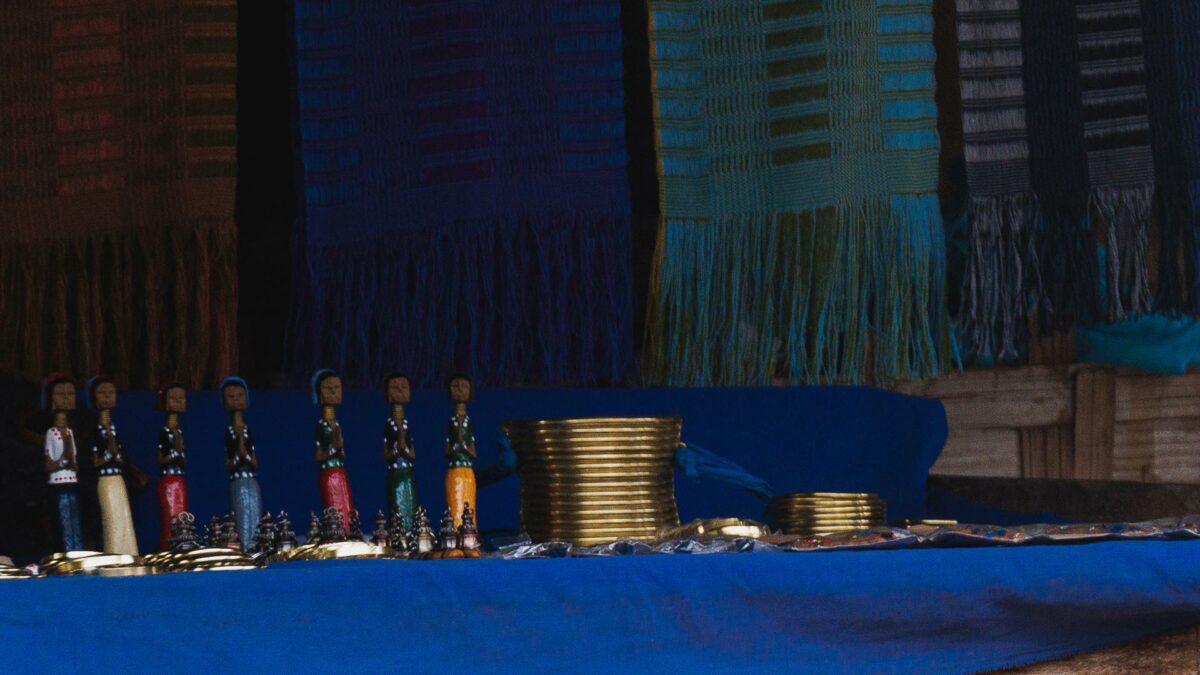
She then sits calmly in front of her loom, some crafted scarves, statues and jewellery in the background, continuing to weave all day, waiting for tourist to come while occasionally chatting with another woman of the tribe.
When I asked her if she likes to make scarves, she laughs, “It’s like meditation to me!”
Strings attached
Hers is a traditional house made of a dark wood structure and bamboo. Like all the houses in Huay Pu Keng it was built by the men of the village. She lives there with her husband Kent Moung and their two youngest daughters, Poe Poe, 10 years old, and Pu Ree, 12, who still attend school in the village. Her oldest daughter Mu Pound, 16, studies in the nearby town of Mae Hong Son and comes home for the holidays.
Ma Pang tells me she’s happy to be working here in the village, it gives her daughters the opportunity to study and, hopefully, find a job in a village nearby. This could help toward the acquisition of a better legal status, and this is probably why she is so keen on welcoming tourists coming back.
Her husband is one of the four sons of Mu Kler, the eldest Kayan woman living in Huay Pu Keng, making the tribe one whole big family.
Across the river: the clash of tradition
A tribal life is a life of tradition and for the Kayan Lahwi the most visible one is the neck ring that the women wear. It would be an oversimplification to narrow it down only to that, but it’s an important point of conversation and a particularly visible expression of identification with the tribe.
It is a form of mutilation, and, as it is often with any tribe around the world, it’s a sign of belonging. Nowadays, women and girls can choose whether they want to wear the rings or not, keep them or remove them. Ma Pang’s daughters, for example, don’t wear them, if not sometimes during the traditional celebrations.
Elder women often keep them because of the deep link with their tradition, but younger women in more touristic villages close to Chiang Mai wear them mostly to attract the tourists.
For Ma Pang it is for sure a question of tradition and gracefulness, and I have no doubt she is telling the truth when she tells me she likes wearing them. She’s an elegant woman, taking care of her looks and minding her appearance; she stopped chewing the traditional maak because her smile looked bad in tourist’s photos.
The same goes for traditional clothes: the younger generation adopted a more casual look, in western style, and even in the village the colourful folkloristic shirts and dresses are slowly being replaced by football team t-shirts, Marvel or Hello Kitty apparel.
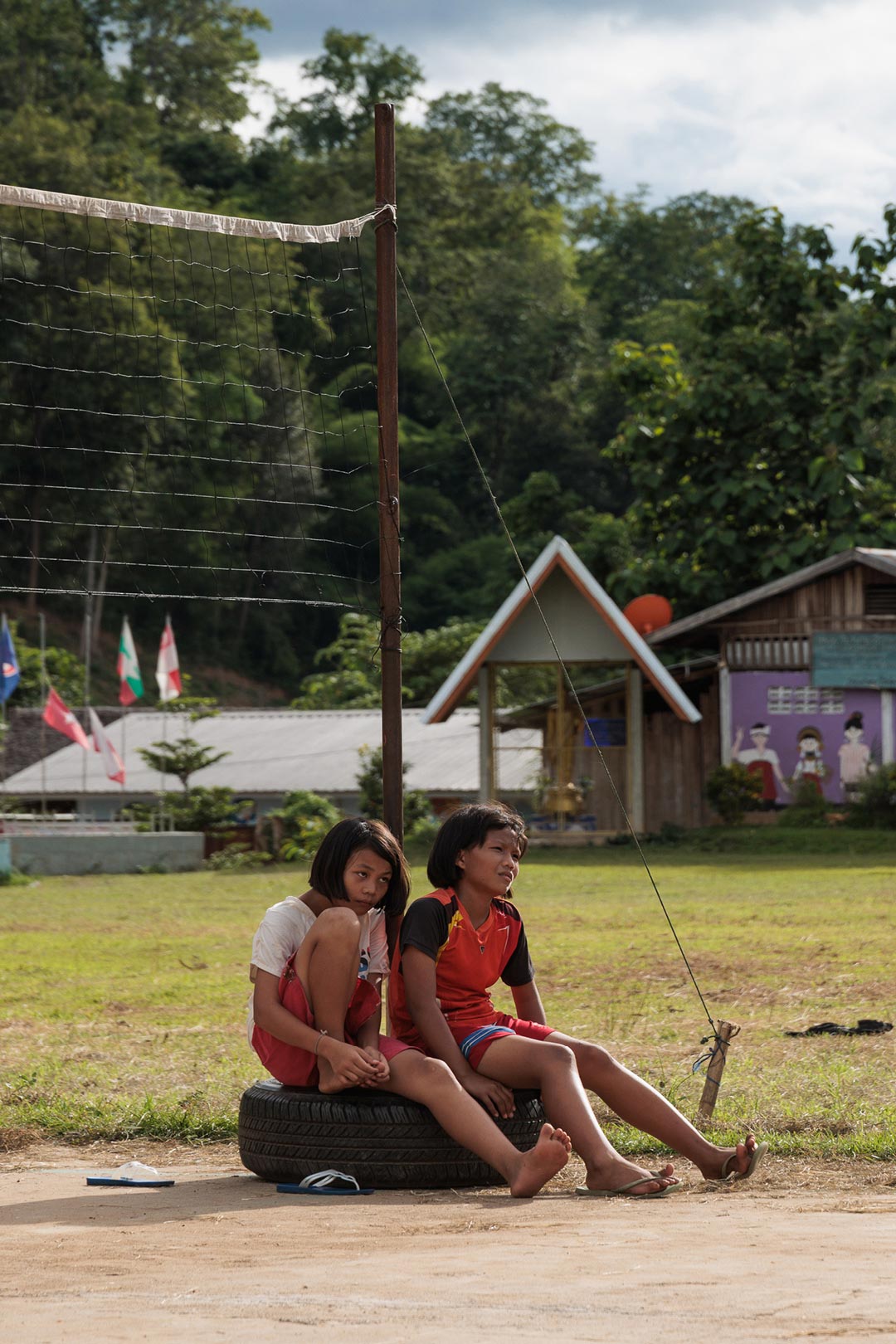
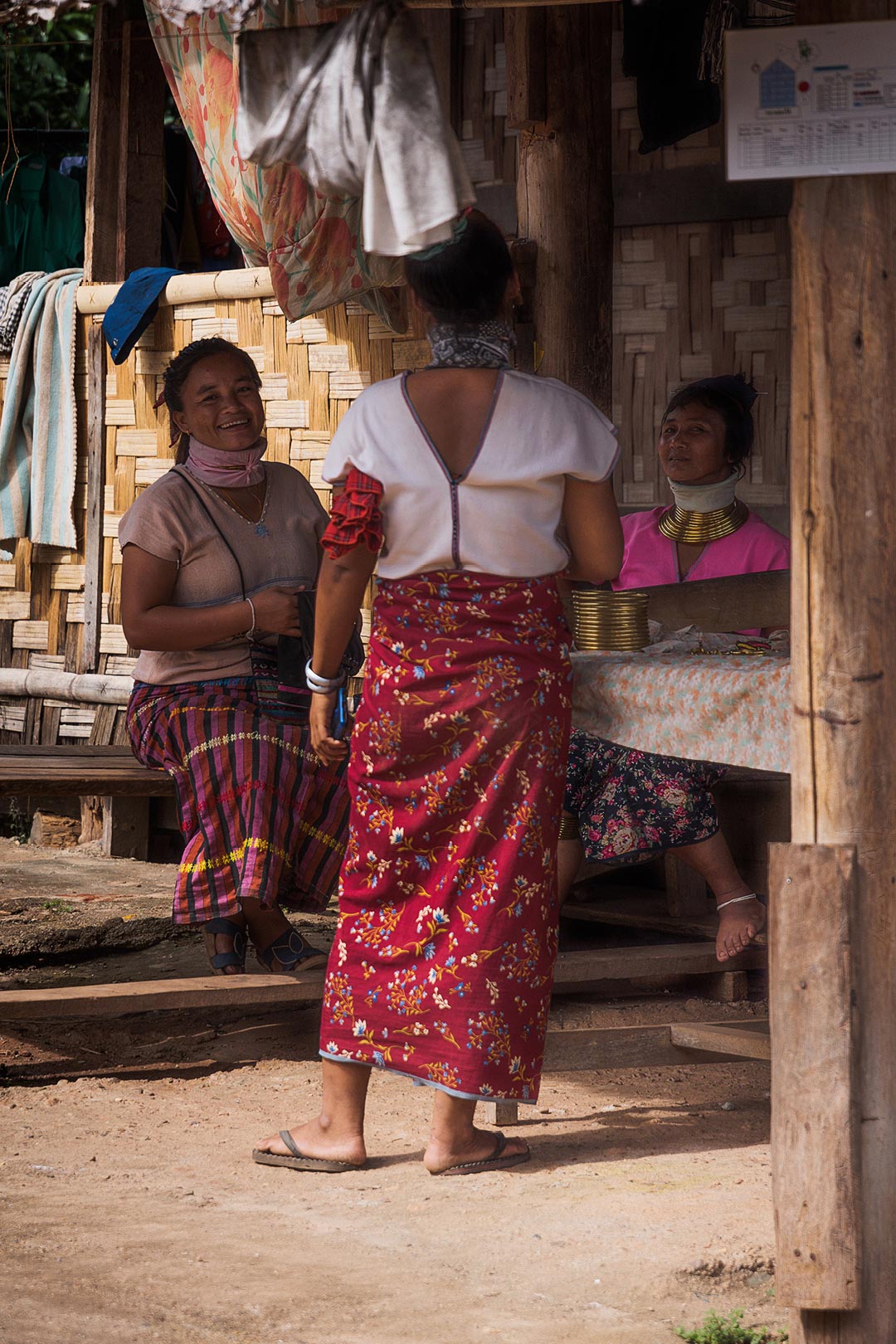
It seems that the balance in place between tradition and modernity is more fragile than ever; technology is rightfully taking its place in rural areas and young tribal people are spending more and more time on Facebook, Instagram or TikTok, opening a questionable, new window on the world.
Travellers are also becoming increasingly aware of the life conditions and touristic exploitations in the different villages, making more educated choices (and if you’re reading this article for those reasons, we will soon add an article about our experience in the village, subscribe to our newsletter to stay up to date). You can also find some interesting information on this article of the Asian Geographic website.
Ma Pang is hopeful that the Kayan tradition will live. Like for all tribal life, the modern world is slowly catching up, and by seamlessly building bridges it is slowly diluting the rituals, folklore and knowledge that makes those tribes so unique.
Blooming through the rocks
Now that I have learned more about Ma Pang, I have a better grasp on the complex pattern that is her life.
Imagine if, at the end of our life, we would receive an enormous tapestry. Imagine each string being a person we’ve met, a challenge that life threw at us: a war, a kid to protect, a brass ring, a metaphorical river or a real mountain you’ve crossed.
It might feel like life has not left you much choice or has been unkind, but with all those strings at hand we are still the ones making decisions about how we want to entwine them. We have no choice but to make a choice, any, and move forward, because there aren’t many other directions we can go.
Ma Pang could argue that life has been unfair with her, and she wouldn’t be wrong. But beyond that, established that life doesn’t have much to do with fairness, what’s left to do for her?
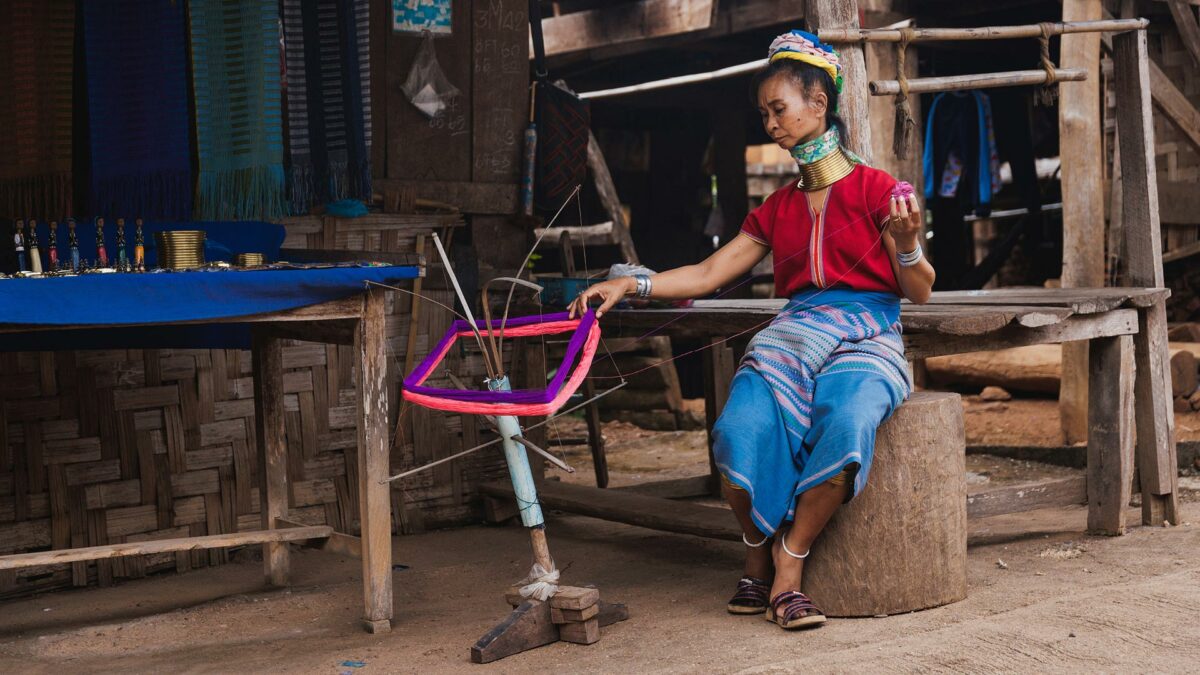
We are the master weavers of our life, not because we always get to choose what we like best, but because we make our path with what we get. We might not start with the same amount of colours, or the same quality of wool, but if out of those yarn we’ve been handed we want to grow a flower, nothing can stop us!
Ma Pang seems to have understood this. Despite all the difficulties that she has faced so far, she made a home out of four bamboo walls, she made a loom out of her personality and, with it, she weaved every day a life that was safe enough for her family to bring the knowledge and tradition forward, to the next generation.

